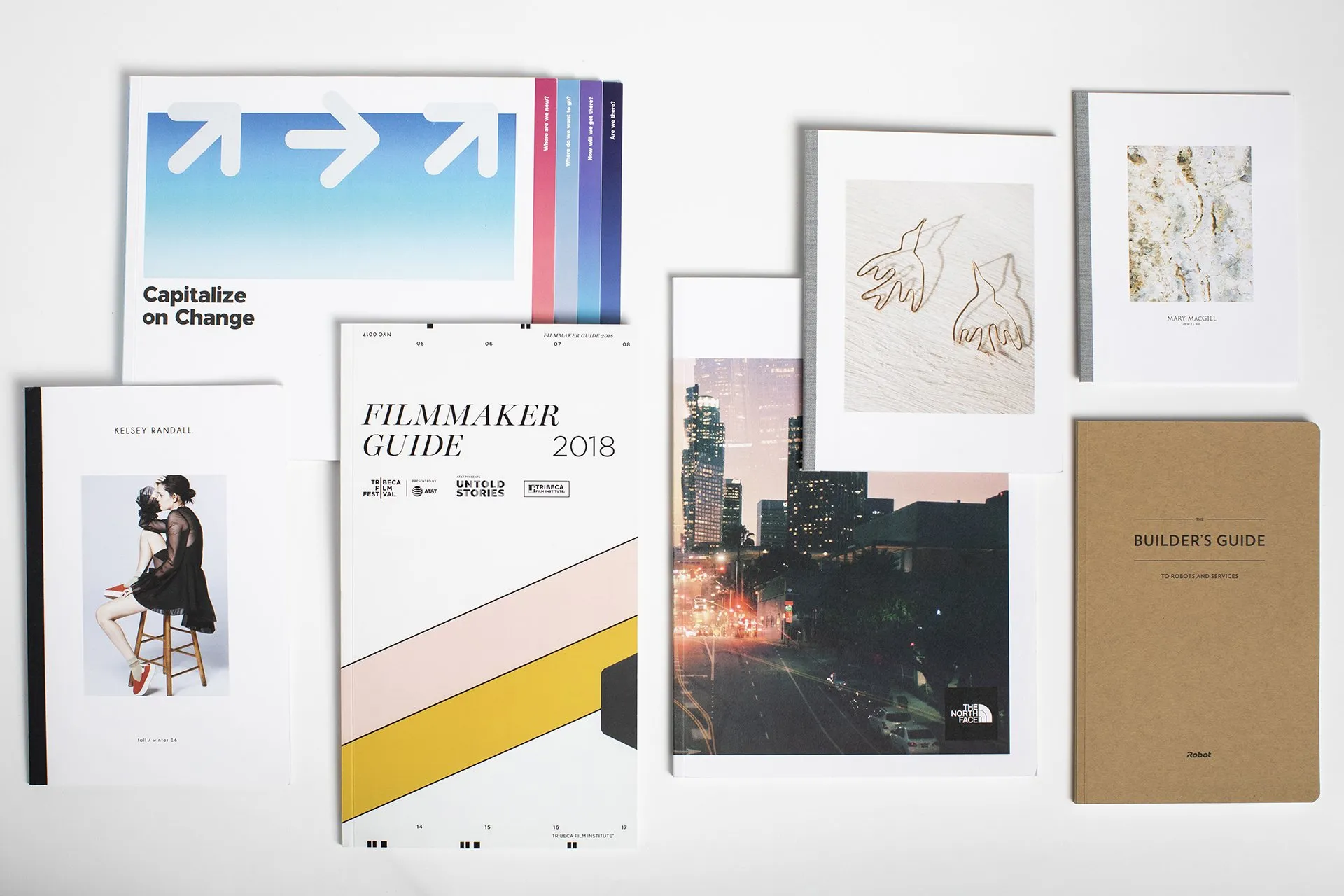
How to Choose the Right Book Binding for Your Project
October 29, 2020
When printing books and magazines, catalogs, zines, white papers, or any other document with multiple pages, you’ll inevitably have to decide how you will bind or book your project. For some things, all you need is a stapler or paperclip. Other projects call for something nicer.
Knowing about the different types of document binding will help you avoid making a hasty last-minute decision. Choosing the right binding will make your document more functional and aesthetic. Read on to learn more about the different types of binding. You’ll probably recognize at least a few of them.
What to Consider Before Choosing a Book Binding
Before choosing a specific book binding method for a project, it’s essential to consider various factors to ensure the finished product meets your needs and preferences. Here’s what you should do before deciding on a book binding method.
Define Its Purpose and Use
Clarify the purpose of the book and how it will be used. Is it for personal use, a gift, or professional presentation? Understanding the book’s purpose helps determine the appropriate binding type.
Consider Durability and Longevity
Assess the level of durability required for the book. Will it be frequently handled or stored for a long time? Choose a binding that suits the expected wear and tear.
Understand Aesthetics and Design
Consider the visual appeal you want for the book. Evaluate how different binding methods complement the book’s content and overall design. Choose a binding that enhances the book’s aesthetics.
Review Book Size and Page Count
Factor in the size and thickness of the book, as different binding methods work better with specific book sizes and page counts. Ensure the chosen method can comfortably accommodate the book’s dimensions.
Seek Expert Advice and Samples
Consult with bookbinding professionals to get advice based on your specific requirements. Examine sample books bound using different methods to help you visualize the end result.
Types of Document Bindings to Choose From
Perfect Binding
Perfect binding is used for paperback and softcover books. The process involves using a strong, hot-melt adhesive to glue sections of pages together, which are then glued to the spine of the book. The finished product is nice looking and long-lasting. Perfect binding is versatile—it can be used on everything from large catalogs to small paperback books of up to 250 pages.
Comb Binding
Comb binding uses a plastic spine with rings called a comb, which is inserted into holes punched through the book. Comb bound books can be opened to lay flat, but the pages can’t be flipped 360 degrees (so that the previous pages are behind the page being read). A major advantage of comb binding is that pages can be added and removed from the document easily. That’s why this type of binding is often used for reports, presentations, cookbooks, sales and inventory sheets, manuals, and albums.
Velo Binding
With Velo binding, several small holes are punched along the edge of a book. A strip containing rigid tines is inserted into the holes through the front of the book. Next, a strip with corresponding holes is placed on the back of the book. With the strips in place and the tines protruding through the holes, the book is placed into a special machine that cuts and melts the tines to seal the bind. Velo binding forms a strong, long-lasting bind and is good for books of up to 200 pages.
Tape Binding
Tape binding involves gluing strips coated in thermoplastic glue to the spine and cover of a book. It’s basically perfect binding with a piece of heavy-duty tape on the spine. Tape binding creates a strong, long-lasting bind, and the tape strips come in a variety of colors and materials, including linen and vinyl. Tape binding can be used on books up to 200 pages.
Wire Binding
Wire binding uses C-shaped wire loops, which are inserted through holes in the book or document, and then crimped closed until they form a complete circle. Wire binding is very versatile—it can accommodate paper of varying thickness, including heavy cardstock, and allows a book to lay open flat. It has a more sophisticated appearance than spiral binding and is well-suited for training books, reports, manuals, and how-to guides of up to 250 pages.
Saddle Stitching
With saddle stitching, large sheets of paper are folded down the middle and then stapled together in the center. Many magazines are bound using saddle stitching. It’s a cost-effective binding method, but it’s not meant to last a long time or withstand heavy use. Saddle stitching is best for documents of 10 to 80 pages that don’t need to have a long shelf life, like magazines, catalogs, and zines.
Case Binding
Case binding is the classic style you see on hardcover books. Sections of pages are sewn together and glued to the spine of the book. Case binding is best for high-end projects and books of 400-800 pages meant to last many years or be passed down through the generations. A special binding process is used for library books, which must be able to withstand heavy use.
Bestype Can Help with Document Binding
Need help choosing a document binding type? At Bestype, we have experts in book printing and document binding that can help you with any questions you have. Contact us today to get started on your book binding project!